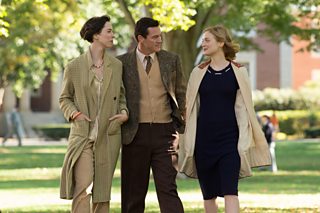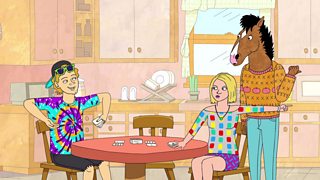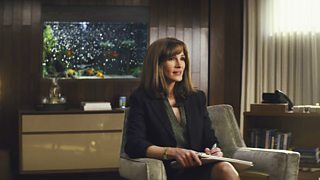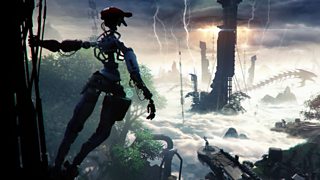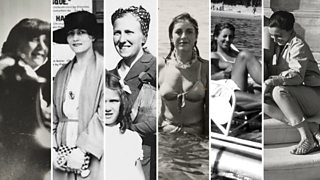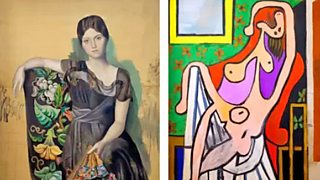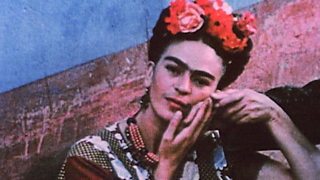Five surprising secrets behind the creation of Wonder Woman
26 December 2017
Over thirty comic-book heroes will appear in 2018’s Avengers: Infinity War, but will any of them try to overthrow the patriarchy using psychology and BDSM sex moves? No? Then none can hold a candle to Wonder Woman, nor the subversive writer who created her in 1941.
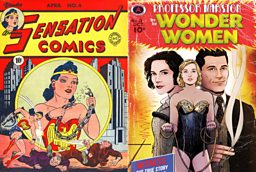
1. Wonder Woman was created by the man who invented the lie detector
Dr William Moulton Marston was an internationally famous psychologist, generally credited as the inventor of the polygraph test, which measures changes in blood pressure to determine whether someone is lying.
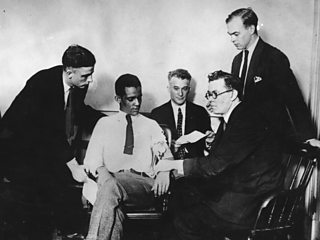
He was obsessed with people’s personalities, and their secrets, but furthermore was a prolific writer of screenplays, novels and articles, and also had acted as a consulting psychologist for Universal Pictures.
In 1940, the acclaimed ‘Doc’ Marston was hired by Maxwell Charles Gaines, the founder of All-American Comics who published the incredibly popular Superman and Batman comic books at the time.
Gaines had an image problem - these comic books were very controversial, often being criticised for their violence and sexual imagery. But then Gaines read an interview given by Marston in which the psychologist defended his comics:
“When a lovely heroine is bound to the stake, comics followers are sure that the rescue will arrive in the nick of time. The reader’s wish is to save the girl, not to see her suffer.”
He was appointed to Gaines’ editorial board for these comics, in an attempt to fend off such criticism; Marston believed that the best way to counteract what he called the “blood-curdling masculinity” in the comics world was with a female superhero, and in February 1941 he submitted his first script for Wonder Woman.
Perhaps as a nod to his work on the polygraph test, her signature weapon was the ‘Lasso of Truth’ – a golden rope that, if anyone was bound by it, magically prevented them from lying.
2. Wonder Woman was based on his wife – and his live-in mistress

Gaines wanted Marston’s help to avoid the judgement of mainstream audiences - but if he knew the psychologist’s taboo secret life, he surely would have never hired him. William Marston was married to a lawyer named Elizabeth Holloway, but in 1925 he met and fell in love with a young woman named Olive Byrne, a senior at Tufts University - he was her psychology professor.
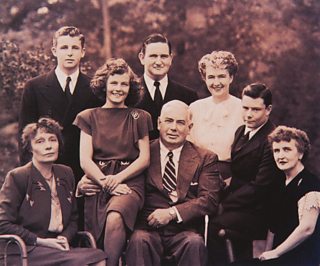
But far from developing into a marriage-ending affair, the two women in William’s life were very aware of each other. Olive Byrne moved into the Marstons’ home, living with them in a polyamorous relationship for decades, and each woman bore William two children.
To avoid being ostracised by the community, their cover story was that Olive was Marston’s widowed sister-in-law, and the family had taken her in as a kindness. It was reportedly a very happy if unorthodox family.
It is generally believed that both of William’s lovers inspired the character of Wonder Woman, an angle that is explored in detail in Angela Robinson's 2017 film Professor Marston and the Wonder Women.
Olive Byrne is touted as the visual inspiration for Wonder Woman, right down to her bullet-deflecting bracelets, a frequent accessory of Olive’s. However, the idea to create a female superhero is rumoured to have come from Elizabeth, a highly educated woman who like her husband held degrees in law and psychology and who was the family’s main breadwinner for a while when her husband’s work dried up.
In Professor Marston and the Wonder Women, Elizabeth and Olive are portrayed as having been romantically involved not just with William, but with each other too. This is disputed, but what is true is that the women shared a close bond – after William Marston died of cancer in 1947, the women continued to live together for the rest of their lives.
3. Wonder Woman is psychologically designed to be the perfect woman

Marston spent much of his career studying personalities and emotional behaviour, and he used his research to shape Wonder Woman into what he viewed as the ideal personality. His 1928 book Emotions of Normal People laid the groundwork for a very influential method of measuring personality types known as DISC theory.
Not even girls want to be girls so long as our feminine archetype lacks force, strength and power.William Marston
He proposed that everyone’s personality could be measured based on their unique blend of four behaviours: Dominance (D), Inducement/Inspiring (I), Submission (S) and Compliance (C). It is a method still used to measure personality types to this day.
Through this research, he came to believe that women naturally had a tendency towards submitting to loving authority, whereas men tended towards dominant authoritarian behaviour that he found toxic. His vision for a more positive role model would be one who was as strong as a masculine archetype while as loving as a feminine one – something Marston referred to as a “love leader”.
In Marston’s words, “Not even girls want to be girls so long as our feminine archetype lacks force, strength and power. Not wanting to be girls, they don't want to be tender, submissive, peace-loving as good women are. Women's strong qualities have become despised because of their weakness. The obvious remedy is to create a feminine character with all the strength of Superman plus all the allure of a good and beautiful woman.”
So while Wonder Woman can Dominate her opponents with her truth-compelling lasso or by knocking them out with one punch, she will Submit to reason or empathy if she deems it the right course of action.
Perhaps that language sounds a little too much like erotica; however, this was also Marston’s intention.
4. Wonder Woman's adventures were influenced by the Marstons' sex lives
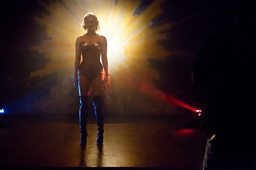
William Marston was an admirer of fetish and bondage aesthetics, as presumably were the women in his life – Professor Marston and the Wonder Women certainly makes that case. As well as being deeply rooted in his psychological interest in people’s behaviour, and the power dynamics between them, he viewed it as very healthy and moral.
Wonder Woman satisfies the subconscious, elaborately disguised desire of males to be mastered by a woman who loves them.William Marston
It’s difficult to look at Marston’s run writing Wonder Woman without noticing these influences, from the way she whips or ties up her enemies, to the way she finds herself bound or tortured in nearly every issue. In fact, Marston would write detailed descriptions for his artists for how a chained-up Wonder Woman should look.
Naturally, the comics received complaints. Claims of the character not being ‘sufficiently dressed’ or accusations of ‘sadistic’ imagery came to the publisher Gaines, who expressed concern to Marston about the sexual nature of his comic book.
However, Marston wrote to Gaines, arguing that the kinky nature of his heroine was another aspect of her being a positive role model: “This, my dear friend, is the one truly great contribution of my Wonder Woman strip to moral education of the young. The only hope for peace is to teach people who are full of pep and unbound force to enjoy being bound.
“Only when the control of self by others is more pleasant than the unbound assertion of self in human relationships can we hope for a stable, peaceful human society. Giving to others, being controlled by them, submitting to other people cannot possibly be enjoyable without a strong erotic element.”
Perhaps Marston convinced Gaines with his reasoning; or maybe the publisher was just content with the incredible sales figures of Wonder Woman comics. In any case, the bondage-themed imagery remained a staple of Marston’s time writing the character.
5. Marston was an active feminist, and Wonder Woman was his propaganda

The influence of the two strong women in his life, his psychological research and gratuitous use of BDSM imagery was all in service of one goal; he wanted Wonder Woman to be a feminist icon, who would inspire young women to stand against the patriarchy.
William Marston grew up and was a student during the suffrage movement in the early 20th Century, and was a keen supporter of women’s rights.
Frankly, Wonder Woman is psychological propaganda for the new type of woman who, I believe, should rule the world.William Marston
He actively encouraged his wife Elizabeth to continue to study psychology and law, and to work at a time when society deemed a women’s place to be in the home. Furthermore, their mistress Olive Byrne was the niece of the important feminist Margaret Sanger, who in 1916 had opened the first birth-control clinic in the United States with Olive’s mother.
The women’s rights movement fed into the superhero Marston created. The aforementioned imagery of Wonder Woman being chained and bound took inspiration from the feminist cartoons that often portrayed chained women breaking their bonds, as a metaphor for breaking free of the restrictions placed upon them by a male-dominated world.
The backstory of Wonder Woman’s home of ‘Paradise Island’ as being an all-female utopia felt familiar to these ideals too. Taking inspiration from Greek myth, she and her fellow Amazonian women were once enslaved by the male demigod Hercules, chained at the wrists as part of their servitude. Eventually they broke free of their chains, and started their all-female society, although continuing to wear bracelets on their wrists as a reminder never to let men enslave them again.
Marston viewed women as the superior gender, and believed their loving nature made them better leaders than men. Wonder Women was to serve as his vision of the ultimate role model.
Although he died shortly after World War II, Elizabeth and Olive survived to see Wonder Woman’s feminist icon status affirmed decades later. In 1972, prominent woman’s rights activist Gloria Steinem – a lifelong Wonder Woman reader – pushed for the character to grace the cover of the first issue of feminist publication Ms. Magazine.
The slogan ‘WONDER WOMAN FOR PRESIDENT’ emblazoned right under its title would surely have made Professor Marston’s day.
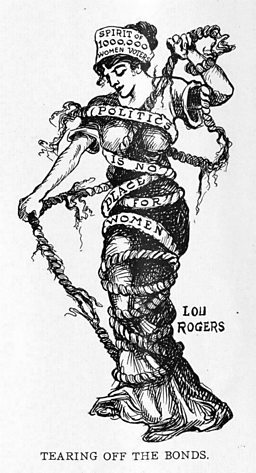
Wonder Woman comics have been published by DC ever since her creation by William Moulton Marston in 1941.
Check out Front Row's comic-book special on Wednesday 27th December.
The original version of this article was first published on 10 November 2017.
Front Row radio
-
![]()
Film Review
Film critic Karen Krisanovich on Professor Marston and the Wonder Women (2017).
More from Front Row
-
![]()
Shows within shows
The animated characters who watch other shows on TV.
-
![]()
Podcast transitions
Can your favourite audio survive a move to the screen?
-
![]()
Ready to rumble?
Seven times the art world grappled with wrestling.
-
![]()
Apocalypse now
Seven doomed futures from E3’s hottest games.
More from BBC Arts
-
![]()
Picasso’s ex-factor
Who are the six women who shaped his life and work?
-
![]()
Quiz: Picasso or pixel?
Can you separate the AI fakes from genuine paintings by Pablo Picasso?
-
![]()
Frida: Fiery, fierce and passionate
The extraordinary life of Mexican artist Frida Kahlo, in her own words
-
![]()
Proms 2023: The best bits
From Yuja Wang to Northern Soul, handpicked stand-out moments from this year's Proms
